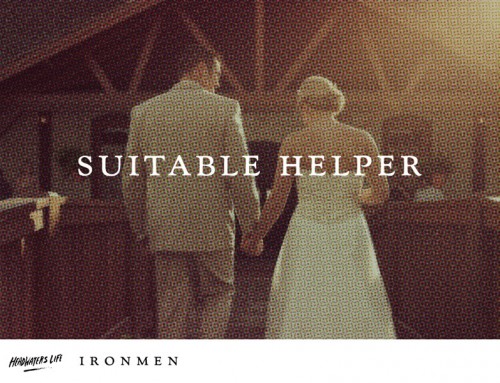Conflict in business is everyday stuff. People don’t like conflict, so they don’t get a chance to get good at its resolution. I like conflict, or rather, I enjoy the opportunity to get better at its resolution. As CEO, I deal with conflict all the time. By the time it’s made it to me, it’s festered into a rather significant boil. And if it were easy to resolve, it would have already been taken care of at an earlier stage. Therefore, unless I want to upset all parties and take a defensive stance, I need to get at the core elements of the conflict, soothe emotions, and come up with a solution that keeps the company’s reputation somewhat unharmed and the parties happy enough. I have a formula and style that has worked for me countless times.
First of all, my assumptions:
- People don’t like conflict and want to see it go away as soon as possible. Those that have been hurt by someone’s actions, usually don’t want to punish, they just want to see it made right. For those that have caused the conflict, they face a character issue on its resolution.
- 98% (made up %) of all conflict is a result of poor communication, miscommunication, an ambiguous communication, unrealistic expectations, or just everyday human error.
- Of the 2% that is genuine conflict, a negotiation or lawsuit may ensue. We’ll take this up some other time.
- Mistakes often get compounded by people avoiding responsibility and postponing notification of the parties that they made a mistake.
- Oftentimes there’s pain for one of the parties to resolve the matter. Postponing the situation won’t alleviate the pain and often makes it worse.
So, for example, this has happened many times: I’d have a loan originator (LO) employee that would take a loan application and set expectations with the borrower and, if a purchase loan, with the real estate agent. The LO would gather all the borrower information, look it over, and address anything that needed work. After working on validating the information in the file through processing, something would come up that would stop the deal from moving forward until resolved. The LO would need to go back to everyone involved to say that there’s a problem. If the LO made a mistake, or didn’t interpret things correctly, set the wrong expectations, or one of a thousand things, the agent and borrower would get upset. Any unwillingness from the LO to face the music and resolve the issue would just make matters worse as the deadlines got closer, and escalate the problem to my desk.
When this happens, my formula is:
- Talk to all parties and let them know I am going to get into it. I ask for a little patience and to stay calm of emotions. I will ultimately get to the right answer and, if my company is in the wrong, make it right. This buy-in from everyone gives me enough time to gather facts. Without facts, it won’t get resolved amicably.
- Tell everyone exactly what I’m going to do, who I’m going to talk with, the information I’m going to gather, and exactly when I’m going to contact them again. This is the most critical piece of the puzzle. Tell them what you’re going to do and do it. If you don’t, you’ve blown any real chance of restoring your reputation.
- Take responsibility for the problem. “I apologize that we’re all in this situation; we’ll get past this and we’ll get this problem off our plate so we can move on to more productive things.” I say this as a way to plant that idea in their minds rather than lawsuits. If there’s a potential for a lawsuit, I’m careful with my words so as to not admit liability, but still take on responsibility.
- Get into the situation. Most issues involve a couple of degrees of complexity. A human error that went unnoticed that put us in a corner which would result in the borrower potentially having to pay more money (we usually eat those). Or the plain reality that the borrower’s finances had a problem that went undiscovered for a time. This delay resulted in expectations that needed to be adjusted and now require the borrower to pay extra (we don’t eat those). I don’t own someone else’s problem, I just try and help them.
- Determine the salient facts and features of the conflict. I call the aggrieved parties back at the exact time I said I would whether I am ready to proceed or not. This is a big error that I’ve seen. When a borrower is told to expect a call, but the information just isn’t ripe for resolution, and the call isn’t made: Explosion.
- If I‘m not ready to proceed to the next step for resolution, I explain why and ask for some more time. I repeat the formula for the new expectation.
- In the resolution phase, I lay out the facts. I need to identify clearly what happened and why the train got off the tracks. I do not hide if or where we slipped up.
- At this point, I either eat the cost and make good on our error or identify the steps required to get back on track. I also address the cost to the borrower, if any. If there’s some good will gesture I can make by paying for some of the issue, I’ll generally make it. But if it’s too large and is clearly in the borrower’s camp, I’ll just wait for their reaction.
- Silence at this stage is important to let the parties digest matters. Pain doesn’t go down easily, but sometimes it is what it is.
- Sometimes deals just don’t get done and sometimes you have to do deals that you don’t want to do because it’s the lesser of two evils. Those are just judgment calls. But at least jumping in to stop solvable problems from spinning out of control is a learnable skill.
As I said most people don’t like conflict. They just want to resolve issues and move on with their lives. And most of the time (Highlight this in your mind because this is a major takeaway): It’s not that a mistake was made, it’s what you do about it that matters. What makes things dramatically worse is when people run and hide rather than admit and resolve. This is a character issue that is defining.
What I haven’t talked about here is what happens after this. I’ve run out of space, but quickly, punishment doesn’t make sense. Learning is important for all good intention situations. Learn, fix, and move on. If someone makes the same error over and over, then maybe employment isn’t a good fit.
How comfortable are you with conflict? With customers? Employers? Spouse? Friends? Parents? Siblings? Others? How can you be cool during conflict?
To your improving your ability to handle conflict,
Dave Marr
Get an encouraging letter each week to provoke your thinking.
Every Friday you'll get a short reflection on life intended to get you to think about things a little differently.
Subscribe to Ironmen





